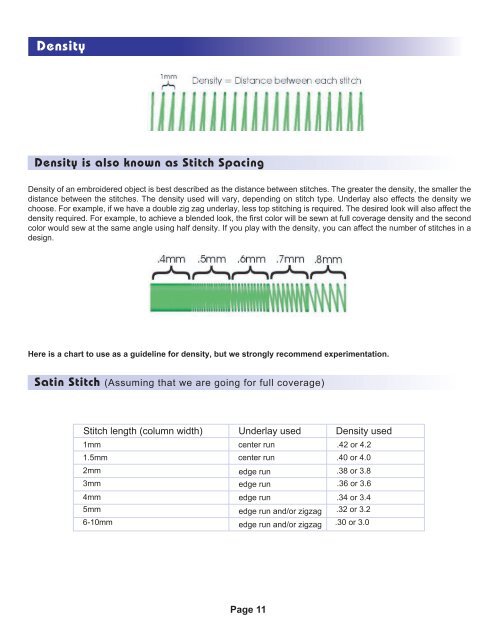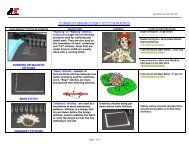Compiled Embroidery Skill Articles
Create successful ePaper yourself
Turn your PDF publications into a flip-book with our unique Google optimized e-Paper software.
Density<br />
Density is also known as Stitch Spacing<br />
Density of an embroidered object is best described as the distance between stitches. The greater the density, the smaller the<br />
distance between the stitches. The density used will vary, depending on stitch type. Underlay also effects the density we<br />
choose. For example, if we have a double zig zag underlay, less top stitching is required. The desired look will also affect the<br />
density required. For example, to achieve a blended look, the first color will be sewn at full coverage density and the second<br />
color would sew at the same angle using half density. If you play with the density, you can affect the number of stitches in a<br />
design.<br />
Here is a chart to use as a guideline for density, but we strongly recommend experimentation.<br />
Satin Stitch (Assuming that we are going for full coverage)<br />
Stitch length (column width) Underlay used Density used<br />
1mm center run .42 or 4.2<br />
1.5mm<br />
center run .40 or 4.0<br />
2mm<br />
3mm<br />
edge run<br />
edge run<br />
.38 or 3.8<br />
.36 or 3.6<br />
4mm<br />
edge run<br />
.34 or 3.4<br />
5mm edge run and/or zigzag .32 or 3.2<br />
6-10mm edge run and/or zigzag .30 or 3.0<br />
Page 11




